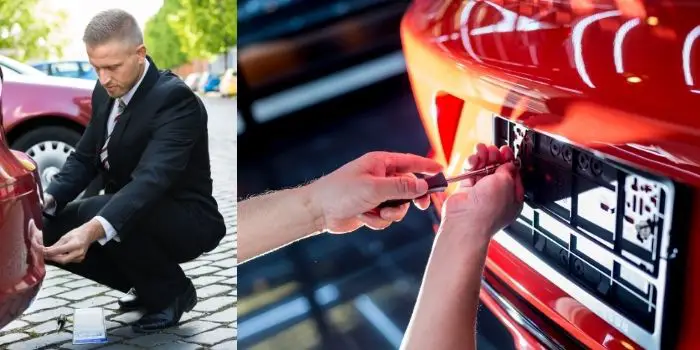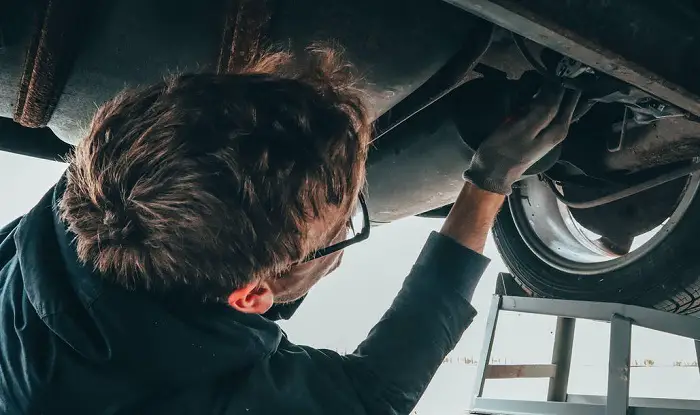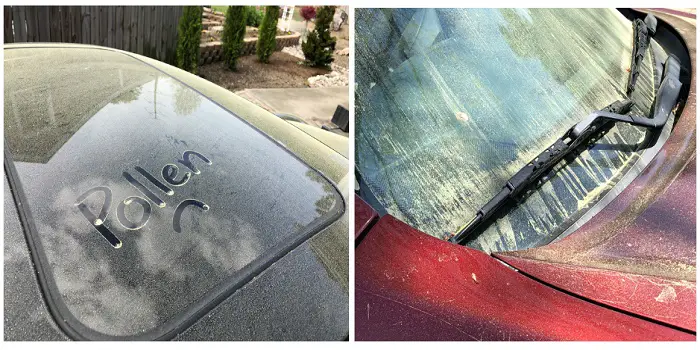There’s nothing quite like the heart-sinking realization that your license plate screw has become one with your car.
Rusted, stuck, and mocking you with every twist of the screwdriver.
But don’t worry—you’re not alone, and this isn’t the end of the world.
Grab some tools, a bit of patience, and we’ll get that stubborn screw moving again.
Why License Plate Screws Won’t Come Out?
If your license plate screw is refusing to budge, you’re not imagining things—it’s not just being difficult for fun.
There are a few common reasons why these tiny hardware villains get so stubborn:
1. Rust and Corrosion
The most obvious culprit. Over time, moisture, road salt, and weather take their toll, fusing the screw to the metal frame.
What once turned easily now feels welded in place.
2. Overtightening
If someone in the past really “wanted it secure,” they may have over-tightened the screw.
That extra torque can make it nearly impossible to unscrew without special tools—or a little elbow grease.
3. Stripped or Damaged Heads
Sometimes the screwdriver just can’t grip properly because the screw head is worn down or stripped.
When that happens, your usual twisting method simply won’t work.
4. Paint or Sealants
Occasionally, screws get painted over during a car touch-up or sealed with thread-locking compounds.
While this keeps them secure, it also makes removal tricky.

Removing Rusted and Stuck License Plate Screws
Dealing with a rusted license plate nut can feel like wrestling with a tiny, metallic monster.
But armed with the right techniques and a bit of patience, you can get it moving.
Here’s how, step by step:
1. Apply Penetrating Oil
Rust forms when moisture reacts with metal over time, creating iron oxide that essentially “glues” the nut in place.
Penetrating oil works by seeping into microscopic gaps between the nut and bolt, lubricating the threads.
Spray the oil generously and let it sit for 10–20 minutes—longer for heavily rusted nuts.
For best results, tap the nut lightly with a wrench or hammer after soaking to help the oil penetrate deeper. Repeat the process if needed.
2. Use the Right Tools
Using a mismatched wrench or screwdriver can strip the nut, making removal even harder.
For hex nuts, use a correctly sized socket or box-end wrench to maximize contact and torque transfer.
If the nut head is partially stripped, locking pliers (Vise-Grips) or an adjustable wrench with a tight fit can provide extra grip.
Avoid excessive force that could round the nut or damage the surrounding plate.
3. Gentle Tapping with a Hammer
Applying controlled percussive force can help break the bond caused by rust.
Tap the sides of the nut gently with a hammer to create vibrations that loosen corrosion in the threads.
Be careful not to dent the license plate; using a small block of wood between the hammer and nut can protect the car’s finish while transferring vibrations effectively.
4. Heat it Up
Thermal expansion can be a game-changer for stuck nuts.
Heating the nut with a heat gun (or carefully with a propane torch if accessible) expands the metal faster than the bolt, breaking the rust seal. Heat for 30–60 seconds and then attempt to turn it.
Caution: Avoid applying direct flame near plastic license plate frames or paint, and wear heat-resistant gloves to prevent burns.
5. Last-Resort Hacks
If standard methods fail, you have a few more technical options:
- Nut Splitter: A mechanical tool that cracks the nut without damaging the bolt.
- Rotary Tool or Dremel: Carefully cut a slot into the nut to allow use of a flathead screwdriver for removal.
- Drilling Out: Drill through the center of the nut to weaken its structure, then remove it. Always wear eye protection and use proper drill bits for metal.
With these techniques, even the most stubborn rusted license plate nuts can be removed without turning your car into a DIY casualty.

What to Do if License Plate Screws Spin but Don’t Come Out?
Sometimes standard methods like oil, pliers, or heat aren’t enough. Here are some creative, less-common ways to tackle license plate screws that just spin:
1. Use a Screw Extractor Kit
A screw extractor is designed specifically for stripped screws.
Drill a small pilot hole into the screw, insert the extractor, and turn counterclockwise. The tool bites into the damaged screw and twists it out cleanly, even if it’s badly rusted.
2. Rubber Band or Steel Wool Hack
If the screw head is slightly stripped, place a thick rubber band or a bit of steel wool between the screwdriver and the screw. This increases friction, giving you extra grip to twist it free.
3. Cold Treatment
Rapid cooling can sometimes help loosen seized screws.
Spray the screw with a can of compressed air held upside down or use ice packs for a few minutes. The metal contracts slightly, which may break the rust bond.
4. Backwards Tap Method
Sometimes lightly tapping the screw counterclockwise with a hammer while turning can jar rusted bolts loose. The vibration helps dislodge corrosion trapped in the threads.
5. Duct Tape Leverage and Epoxy Grip Trick
A small strip of duct tape folded over the screwdriver can increase surface friction on a rounded screw head, sometimes providing the extra grip you need for light spinning screws.
For extremely stubborn screws, mix a small amount of two-part epoxy or superglue and attach it to a bolt extractor, screwdriver, or hex nut that fits snugly over the stripped screw.
Once cured, it provides a solid handle to turn the screw out.
How to Prevent License Plate Screws from Jamming Again?
Once you’ve finally freed that stubborn rusted screw, the last thing you want is to repeat the battle next year.
A few simple preventative measures can keep your license plate screws turning smoothly for years to come:
1. Use Anti-Seize or Thread Lubricant
Before installing screws, apply a thin layer of anti-seize compound or thread lubricant to the threads.
These products prevent rust and corrosion by creating a protective barrier between the metal surfaces, making future removal much easier.
2. Choose the Right Material
Standard steel screws are prone to rust. Consider stainless steel screws or screws with a corrosion-resistant coating.
They are slightly more expensive but last far longer and resist weathering.
3. Avoid Overtightening
Tightening screws too much can stress the threads and increase the chance of corrosion.
Use a torque wrench if possible, or tighten just until snug—enough to hold the plate firmly without crushing the threads.
4. Regular Maintenance
Check your license plate screws periodically, especially after winter or rainy seasons.
Spray a light coat of lubricant or anti-rust oil every few months to prevent rust from forming.
5. Protective Covers or Frames
If your license plate is exposed to harsh weather or road salt, consider using a license plate frame or cover.
These can reduce water exposure and keep screws and plates cleaner, further reducing the risk of rust.
6. Clean Before Installation
Dirt, salt, and road grime accelerate corrosion. Wipe both the screw and the plate mounting surface clean before installation to reduce the chance of moisture getting trapped.
By taking these simple steps, you can ensure your license plate screws stay free-turning, corrosion-free, and ready for any future inspection—or quick removal.
A little preventive care now saves hours of frustration later.
Final Words
Rusted license plate screws are small, but they can create surprisingly big headaches.
The good news? With the right approach—penetrating oils, proper tools, a little patience, and preventative care—you don’t need to wrestle your car into submission. A few minutes of smart effort now can save hours of frustration later.
Remember, it’s not just about removing the screws; it’s about making sure they don’t turn into permanent fixtures in your car’s history.
Treat them right, protect them from rust, and next time, a quick twist is all it takes. Your car—and your sanity—will thank you.

Based in Orem (Utah) John Paterson graduated from Utah Valley University and has begun writing in 2009. He has a large wealth of experience in writing articles related to cars, automotive repair, wheels, cleaning/maintenance, and much more. He has also written instructional articles in a similar niche for a few online publications as well. Currently, he works as a mechanic in his personal garage shop where he loves serving his countrymen from his heart.





